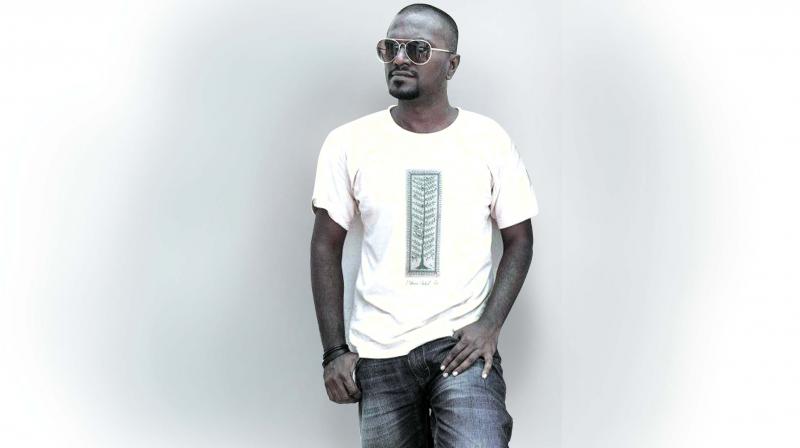Black beauty: Sajan Mani talks about his performance
Artist Sajan Mani talks about his recent performance at the Kampala Biennale in Uganda and the prejudices against Africa.

It's all there in his voice — the passion, the faith, the dedication. Even if you have never seen him perform before, you will hear it all in his voice. Sajan Mani tells his story, perhaps for the umpteenth time, with the patience of a saint. Even his bad experiences come out peacefully, without anger. But then this man has turned around those experiences to work in his favour now. It's made him an artist, it's made him a man of the world. Coming back from a show at the Kampala Biennale in Uganda, Sajan has a lot more to say.
“I was very excited when I got an invitation from the curator of the Biennale,” says this Kannur karan. From his childhood, he says, he was mistaken for an African. “As a little child, I used to feel sad. Because we have that kind of racism here, prejudices against the colour black and against people from Africa. But growing up, I got interested in trans Atlantic slave trade and black politics, culture and music. I realised how strong and powerful the black asthetics was. And I became happy to be confused as an African,” he says.
But there was always this idea of ‘the external body’ on his mind. It is that idea he converted into a 50-hour performance called Liquidity Ar at Kampala. He stayed on a boat he painted red, wearing a boiler suit made with Kerala mundu, and a long red cap — the red of Kannur from his childhood memories coming into his art. “It is for me a colour of hope,” he says. The boat also brings out the concept of water along with ‘crossing the border’ and ‘body in public space’. “Water is important — that’s how countries were conquered, international connections were made and today many migrants try to cross through and die in water,” Sajan says. So his boat tries to be mobile in that land-locked country, attracting the attention of not just art viewers, but passersby on the streets.
Sajan’s performances had long become about post colonial black dalit body. “Dalits in India and their ‘slavery’ have a lot of similarities with black slave history. My ancestors were killed and used as beasts of burden. My body is a site for the powerless, the untouchable and the unspeakable. My performance will attempt to evoke pain, shame, power and fear.”
The ideas had developed later on in life, things had been different once. “Growing up in Kannur as a child of rubber tappers I didn’t think of going to an arts school. I did draw a lot of cartoons. But then I was good in Science so took that for plus two, and then English Literature and journalism in college.” Circumstances led him to work as a migrant labourer in the Gulf for two years.
But then along came the Kochi Biennale and Bose Krishnamachari and Riyas Komu. “Bose especially had been a huge mentor for me. There was also Nikhil Chopra to teach me about performance arts.” Sajan’s life changed. Last heard, he had been doing research residency in the UK and would go there again next year for a performance. But the Kampala Biennale was special. “To go to the country where I have been confused to come from for years, as an artist… that was a huge honour for me. It is sad how we belittle the country even in our cinema. There was a Malayalam film where all people from Uganda are shown as man eating cannibals because of the myth that former president Idi Amin was one. That is so unfair. You will be surprised to find so much of India in Uganda — the temples, the banks and the markets. What if they said one day they won’t allow that in their soil?” asks the concerned artist.
He was also happy to find a lot of Kerala there — jackfruit trees, coconut leaves, papaya and what made him most happy was ‘muringa’ in Malayalam is called ‘moringa’ in Uganda.

